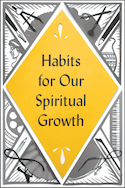7 Fun Facts About Babies and Their Development

To help us get started it might be helpful to know a few facts about babies.
1. Babies are born with a deep need to attach.
The way the human brain works, the deepest craving a baby has is for attachment. Joy is the one thing a baby will actively seek out.[1]
2. Babies initially experience attachment through smell, touch, taste, temperature regulation, and hearing before sight.
Long before baby looks up at you with recognition and lights up with delight, the little one is already bonding through these other senses.[2]
3. Babies are not born with the capacity to regulate emotions on their own.
When babies express fear or anger or sadness or other big emotions, it is our job to read them correctly, meet them in their emotions and help them recover.
We have to recognize what they need and respond accordingly with focused attention and consistency so they can predict good things follow whenever they have a need. We always comfort them during times of distress. We don’t leave them to “cry it out” or they become insecure—never knowing when their needs will be met and when they will be ignored.
4. By comforting our infants again and again, their brains begin to form pathways that allow them to return to joy from upsetting emotions more quickly.
Eventually, they begin to learn how to quiet on their own. Quieting from upset is one of the most important skills a baby can learn and is the number one predictor of stable emotional health.[3]
5. Babies are not born with a single identity.
The part of the brain that thinks of itself as “me” is not fully formed at birth.[4] As a result, infants act like completely different people, depending on the emotion they feel.[5]
This is not always obvious while they are infants, but it shows up clearly in the child stage. When babies express fear or anger or sadness or other big emotions, it is our job to read them correctly, meet them in their emotions and help them recover. If we don’t help them in this way, their brains will not learn how to stay themselves during upset. If we didn’t get help with these skills, even as parents we can turn into someone different when we are upset. Here is a quick self-assessment for the parent:
- Do people walk on eggshells when I get angry? Do others fear my anger and try to keep me happy? If so, I haven’t learned how to stay myself when I get angry.
- Do I receive correction well? Or do others fear correcting me and telling me when I am wrong? If so, I haven’t learned how to stay myself when I feel shame.
- Can fear make me switch from relational and connected to shut down and distant in the same conversation? If so, I have not learned how to stay myself when I am afraid.
6. One of the key tasks of parenting at the infant stage is helping babies develop the capacity to act like themselves regardless of which emotion they feel.
We do this primarily by attuning to their needs and comforting them over and over again. By the time the infant reaches childhood they should have seen us bounce back from upset emotions hundreds of times and they should have received our help in bouncing back from difficult emotions hundreds of times. The more they see us recover and get help with their own emotions, the more stable their identity will be as they enter childhood. This is why it doesn’t work to say, “Do as I say, not as I do” Our kids see what we do and follow our example. This is why we often pick up unwanted habits from our parents we didn’t even know we had learned.
7. Babies have an underdeveloped capacity for joy when they are born.
However, as we practice joy workouts on a regular basis (more to come on that), the joy center in their brain can grow until joy be-comes the default setting in the brain. Based on these important points, we want to maximize joy and look at what it means to practice the ABCDs of raising joy-filled kids when our kids are infants.
[1] The vast writings and books by Dr. Allan Schore (allanschore.com) discuss this brain system, while Dr. Jim Wilder (lifemodelworks .org) applies this research to relationships.
[2] Ibid.
[3] Learn more with E. James Wilder, Edward M. Khouri, Chris M. Coursey, Shelia D. Sutton, Joy Starts Here: The Transformation Zone (East Peoria, IL: Shepherd’s House, Inc., 2013).
[4] The right orbital prefrontal cortex is the part of the brain that thinks of itself as “me.” It is located just behind the right eye. It is present at birth, has important growth spurts early in life, and does not finish developing until the early twenties.
[5] E. James Wilder, The Complete Guide to Living With Men (Pasadena, CA: Shepherd’s House, Inc., 2004), 285–99, 38–39.

Free ebook: Habits for Spiritual Growth
Sign up for our weekly email and get a free download
Bible Insights by Email
Sign up for learning delivered to your inbox weekly

Free ebook: Habits for Spiritual Growth
Sign up for our weekly email and get a free download